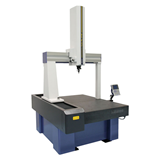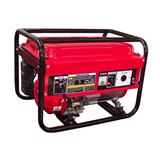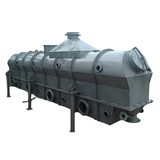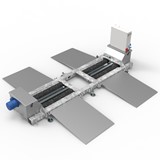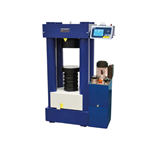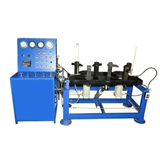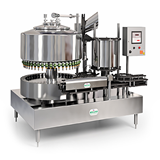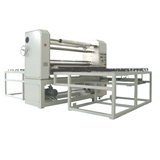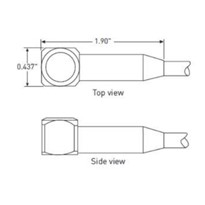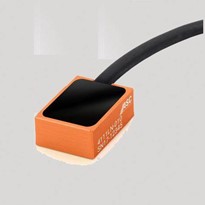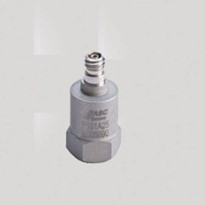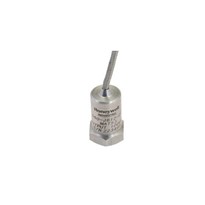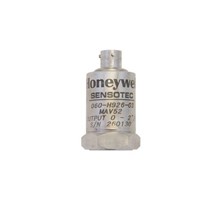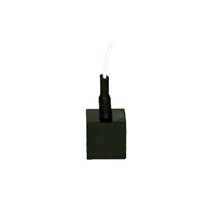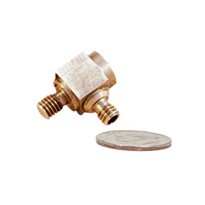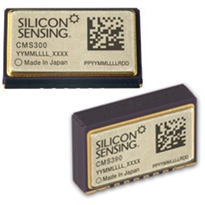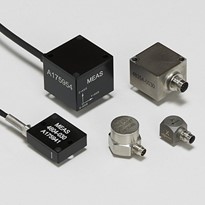It is crucial to use the correct tools to get accurate data for test and measurement activities in engineering applications. Selecting suitable accelerometers requires a detailed understanding of the measurement applications and expected results, such as whether users need to calculate velocity or displacement data.
Types of Accelerometers
There are two types of accelerometers: AC-Response Accelerometers and DC-response accelerometers. AC-response accelerometers are commonly designed from piezoelectric materials that produce an electrical output proportional to the acceleration. The sensing element looks like a source capacitor with a finite internal resistance which forms the RC time constant. For this reason, AC-accelerometers are not suitable for measuring static acceleration such as gravity or centrifugal acceleration. DC-response accelerometers can respond to zero Hertz, making them ideal for measuring static and dynamic acceleration.
AC-Response Accelerometers
AC-accelerometers commonly use piezoelectric elements as their sensing mechanism. The piezoelectric element displaces a charge which produces an electrical signal proportional to the acceleration. AC Piezoelectric accelerometers are available as charge-type piezoelectric or voltage-type IEPE piezoelectric.
A charge-type piezoelectric accelerometer offers a broad dynamic range and usable bandwidth higher than 10kHz. It is generally interfaced with a charge amplifier to avoid problems associated with cable capacitance. Due to its vast operating temperature range from -200oC to +750oC, charge-type piezoelectric accelerometers are generally considered for vibration measurement applications in extreme environments such as turbine or gas engine monitoring.
A voltage-type IEPE accelerometer has a microelectronic circuit to incorporate the charge amplifier inside the housing of the accelerometer. Therefore, it can only be used in an environment with a maximum operating temperature of just 175oC. Unlike the charge-type piezoelectric accelerometers, the full-scale measurement range of IEPE accelerometers is pre-determined by the internal amplifier. This amplifier is pre-set in the factory and cannot be altered by the user.
DC-Response Accelerometers
Piezoresistive and MEMS (Micro-Electro-Mechanical-Sensing) -capacitive sensing technologies are the most commonly used in designing DC-response accelerometers.
A piezoresistive accelerometer can either be gas-damped (MEMS types) or fluid-damped (strain-gauge type). It is easy to interface with but is extremely sensitive to temperature variations. Therefore, it is necessary to compensate for temperature variations through onboard signal conditioning or externally. The output signal from a piezoresistive accelerometer has an outstanding signal-to-noise performance ratio, limited only by the quality of its bridge amplifier. Due to these intrinsic characteristics and their broad bandwidth capability, piezoresistive accelerometers are the most suitable for measuring high-g acceleration, such as automotive shock testing and weapon testing.
A MEMS-capacitive accelerometer employs the MEMS fabrication technique to suit high-volume manufacturing applications. Due to its design and gas-damping, capacitive accelerometers have low bandwidth of only a few hundred Hertz and a limited measuring range of less than 200g. However, they offer high signal stability and good linearity for reliable applications in OEM devices. The MEMS-capacitive accelerometers are the most suitable for measuring low frequency and low-g acceleration, such as building structure and seismic monitoring.
Measuring different types of acceleration
The main issue in selecting an accelerometer is understanding whether the users require the measurement of dynamic acceleration such as vibration or static acceleration such as shock, gravity or motion. Depending on the users preference, they can measure dynamic acceleration with either AC or DC-response accelerometers. However, they can only use DC-response accelerometers to measure low frequency or static acceleration to enable the accurate calculation of displacement or velocity from the acceleration data.
Accelerometer Properties
Sensitivity
Accelerometer sensitivity is denoted by the ratio of the change in acceleration (input) of equipment to the difference in the output signal. It is specified at a particular supply voltage and expressed in mV/g. Generally, a low-sensitivity accelerometer measures high amplitude signals, and a high-sensitivity accelerometer measures low amplitude signals. For example, DC-responsive accelerometers such as MEMS-capacitive typically offer high sensitivity to measure ultra-low frequency vibration in geotechnical testing applications such as earthquake and seismic measurement. They are coupled with a low-noise cable to minimise measurement errors from the measurement chain.
Number of Measurement Axes
Industrial vibration measurement often requires complex measurement in multiple measurement axis and coordinates. It is crucial to identify the correct axis to define how the accelerometers are mounted. The incorrect mounting configuration will produce irrelevant data that do not represent the actual conditions.
Users can choose to install multiple one-axis accelerometers or multi-axis accelerometers for measurement applications in multiple coordinates. However, using multiple accelerometers in one measurement chain requires outputs from each sensor in phases to assess the machine conditions accurately. This configuration complicates the vibration analysis process and increases the risk of error in the output data. Additionally, fitting three separate units may be impractical if the measurement space is restricted. In such cases, using multi-axis vibration sensors such as triaxial accelerometers is an ideal solution. Triaxial accelerometers can simultaneously measure vibration in three orthogonal axes, providing a single integrated output for quick and accurate phase analysis.
Concluding Remarks
Accelerometers are designed with various sensing technologies, each with advantages and disadvantages for niche measurement applications. When designing a new measurement system, we need to ensure that the sensors collect the correct data. We can only achieve this by understanding each technology and our test requirement before moving on to make a proper selection.
In general, static or low-frequency acceleration can only be measured with DC-response accelerometers. MEMS-capacitive accelerometers are an ideal low-cost option for OEM manufacturers with good signal stability and low noise. They are limited in terms of their measuring range and measurement bandwidth. Piezoresistive accelerometers offer broad bandwidth and high-g acceleration measurement capability for use in impact testing and shock testing applications
On the other hand, users can choose either DC-response or AC-response accelerometers such as charge-type piezoelectric or IEPE accelerometers to measure dynamic acceleration or vibration. Choosing between DC-response or AC-response accelerometers for this application is a matter of preference. If the users require measurement in high-temperature environments, charge-type accelerometers are only the viable option. Voltage-type IEPE accelerometers are more popular for other applications due to their compact size and direct interface with almost any modern signal conditioners and data acquisition system.


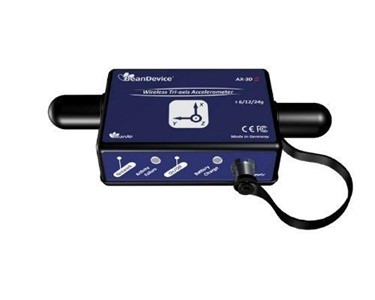

-160x160-state_article-rel-cat.png)


-160x160-state_article-rel-cat.png)
